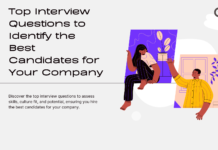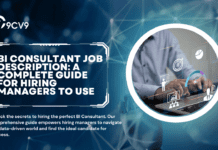Key Takeaways
- Germany’s recruitment in 2025 faces a talent shortage driven by demographic shifts and digital transformation demands.
- Employers are increasingly adopting AI tools, remote work, and international hiring to stay competitive.
- Strategic workforce planning and upskilling initiatives are essential to bridge the growing skills gap.
As Germany enters 2025, the dynamics of its hiring and recruitment landscape are undergoing profound transformation. Fueled by rapid technological innovation, demographic shifts, and evolving labor market expectations, the German employment ecosystem faces both significant challenges and promising opportunities. In the face of rising talent shortages and increasing demand for specialized skills, recruiters, employers, and HR professionals across the country are rethinking traditional workforce strategies to remain competitive and resilient in an increasingly globalized and digital economy.

One of the most defining features of Germany’s labor market in 2025 is the persistent shortage of skilled workers, particularly in sectors such as information technology, engineering, healthcare, and renewable energy. According to the Federal Employment Agency and various industry analyses, the mismatch between job vacancies and available talent continues to widen, driven largely by an aging population and slower-than-expected immigration recovery post-pandemic. As a result, companies are placing greater emphasis on upskilling initiatives, cross-border hiring, and more inclusive recruitment practices to address these systemic gaps.
Moreover, digital transformation is reshaping the very fabric of recruitment processes in Germany. Automation, artificial intelligence (AI), and data-driven hiring tools are increasingly being integrated into talent acquisition workflows to improve efficiency, reduce bias, and enhance candidate experiences. HR tech adoption is no longer optional—it is a strategic imperative for firms aiming to attract top talent in a highly competitive environment. This technological shift is especially relevant for mid-sized companies (Mittelstand), which are embracing digital HR solutions to stay agile amid fluctuating market conditions.
Additionally, evolving employee expectations around flexibility, work-life balance, and career development are compelling employers to rethink workplace culture and value propositions. Remote and hybrid work models have become widely accepted in Germany, with many professionals now prioritizing companies that offer meaningful work, psychological safety, and long-term career progression. In response, forward-thinking organizations are revamping employer branding strategies, enhancing employee well-being programs, and investing in leadership development to retain their most valuable human capital.
The regulatory landscape is also playing a crucial role in shaping recruitment practices in Germany. Changes in labor laws, immigration policy reforms, and data protection regulations are influencing how companies attract and manage talent. With growing discussions around the introduction of a points-based immigration system and faster recognition of foreign qualifications, Germany is signaling its openness to international talent—an essential move to alleviate the ongoing skills shortage.
This blog delves deep into the current state of hiring and recruitment in Germany for 2025, examining macroeconomic indicators, emerging trends, sector-specific developments, and strategic approaches being adopted by companies. By analyzing authoritative data and expert insights, it provides a clear picture of how the German labor market is evolving—and what employers, recruiters, and policymakers must do to adapt. Whether you’re a business leader, HR manager, job seeker, or global talent strategist, understanding the shifting employment terrain in Germany is key to navigating the challenges and capitalizing on the opportunities ahead.
Before we venture further into this article, we would like to share who we are and what we do.
About 9cv9
9cv9 is a business tech startup based in Singapore and Asia, with a strong presence all over the world.
With over nine years of startup and business experience, and being highly involved in connecting with thousands of companies and startups, the 9cv9 team has listed some important learning points in this overview of The State of Hiring and Recruitment in Germany for 2025.
If your company needs recruitment and headhunting services to hire top-quality employees, you can use 9cv9 headhunting and recruitment services to hire top talents and candidates. Find out more here, or send over an email to [email protected].
Or just post 1 free job posting here at 9cv9 Hiring Portal in under 10 minutes.
The State of Hiring and Recruitment in Germany for 2025
- Executive Summary
- Germany’s Economic Context in 2025
- Labor Market Dynamics: Employment and Unemployment in 2025
- The Intensifying Skilled Worker Shortage
- Recruitment Strategies and Technology Trends
- Flexible Work Models
- Candidate and Employer Perspectives
1. Executive Summary
Overview of Germany’s Labor Market in 2025
- Dual Market Reality:
- Germany in 2025 faces a complex economic paradox:
- Stagnant economic growth alongside a persistent and growing shortage of skilled labor.
- Despite subdued macroeconomic indicators, demand for qualified professionals continues to surge across multiple sectors.
- Germany in 2025 faces a complex economic paradox:
- Economic Growth Projections:
- Major institutions forecast near-zero GDP growth: InstitutionGDP Growth Forecast (2025)European Commission0.0%Ifo Institute & DIW Berlin0.3%Bundesbank0.0% (Stagnation Expected)
- Employment & Labor Participation:
- Total employment: ~45.8 million (May 2025)
- Year-on-year change: ↓ 0.1% compared to May 2024
- Labor force participation rate remains flat due to:
- Aging population
- Lower workforce replenishment by younger generations
- Unemployment Statistics: SourceUnemployment Rate (2025)International Labour Organization (ILO)3.6% – 3.7%Federal Employment Agency (BA)6.4% (January 2025)
Critical Shortage of Skilled Labor: An Intensifying Bottleneck
- Skilled Labor Gaps:
- Germany officially recognizes 163 bottleneck professions with critical talent shortages.
- The gap is projected to worsen: YearEstimated Skilled Job Vacancies2024487,0002028768,000
- Annual Talent Requirement:
- To maintain competitiveness, Germany requires a net inflow of at least 400,000 skilled workers annually.
- Key Contributing Factors:
- Demographic Shift:
- Retirement wave from the baby boomer generation
- Insufficient entry of youth into the workforce
- Mismatch of Skills:
- Existing educational and vocational training systems lag behind evolving industry needs
- Regional Disparities:
- Rural areas face deeper talent scarcity compared to urban centers
- Demographic Shift:
Digital Transformation of Recruitment Processes
- Adoption of AI and Technology in Hiring:
- AI Implementation in recruitment surged: Metric20242025Companies using AI in hiring32.2%40.9%Projected growth in AI usage (HR)–+27% YoY
- HR Leaders’ Future Outlook:
- 92% of HR executives intend to expand AI usage in hiring pipelines by end of 2025
- Use cases include:
- Resume parsing
- Automated screening
- Predictive hiring analytics
- Remote and Hybrid Work Models:
- Hybrid work becomes standard:
- Driven by:
- Demand for work-life balance
- Access to wider geographic talent pools
- Enhances employer attractiveness and retention rates
- Driven by:
- Hybrid work becomes standard:
Extended Hiring Timelines and Shifting Power Dynamics
- Rising Time-to-Fill Metrics: YearAverage Time to Fill Vacancy201577 days2025160 days
- Talent Market Power Shift:
- 49% of companies report that candidates hold the upper hand in salary and benefits negotiations
- Only 11% observe employer-led leverage in recruitment dynamics
- Employee Mobility and Retention Challenges:
- 45% of professionals are either actively job-seeking or open to new roles
- Key expectations from candidates:
- Benefits over Base Salary:
- 70% prioritize robust benefits
- Flexible Work Options:
- 80% favor flexible/hybrid/remote arrangements
- Benefits over Base Salary:
- Germany’s Work-Life Balance as a Magnet for Talent:
- Ranked 4th globally for work-life balance
- Becomes a central element of the national Employer Value Proposition (EVP)
Strategic Solutions for Germany’s Talent Crisis
1. Talent Immigration Acceleration
- Streamlining visa and recognition processes for foreign professionals
- Targeted campaigns in countries with surplus of skilled workers
2. Domestic Talent Development
- Reforming vocational education and digital literacy programs
- Upskilling & reskilling initiatives in collaboration with private sector
3. Advanced Recruitment Technology
- Further integration of:
- AI-powered sourcing tools
- Predictive analytics for workforce planning
- Talent intelligence platforms
4. Stronger Employer Branding & Benefits Innovation
- Offering attractive and personalized Employee Value Propositions (EVPs):
- Health insurance, learning allowances, sabbaticals
- Childcare, eldercare, and mental wellness programs
Conclusion: Navigating the Future of Work in Germany
Germany’s labor market in 2025 is at a strategic crossroads. Despite economic stagnation, the escalating talent shortage—especially in skilled sectors—presents both an urgent challenge and a transformative opportunity. Employers that invest in adaptive talent strategies, embrace AI in recruitment, and offer flexible, benefit-rich work environments will be best positioned to attract, retain, and empower the workforce of the future.
2. Germany’s Economic Context in 2025
📉 Subdued Economic Growth in 2025: Stability or Stagnation?
- Macroeconomic Overview:
- Germany’s economy remains largely flat, with GDP growth rates reflecting minimal momentum.
- The country continues its trajectory of economic stagnation, following two consecutive years of contraction.
- Growth Forecasts by Key Institutions: Institution202320242025 ForecastEuropean Commission-0.3%-0.2%0.0%Bundesbank–0.0%Ifo Institute–0.3%DIW Berlin–0.3%
- A modest rebound of 0.4% GDP growth in Q1 2025 has offered short-lived optimism.
- This growth was driven by frontloaded exports to the U.S., anticipating upcoming tariffs.
- The underlying domestic demand remains weak.
- A modest rebound of 0.4% GDP growth in Q1 2025 has offered short-lived optimism.
- Economic Sentiment Analysis:
- Optimistic projections remain fragile and conditional.
- Economic activity is stabilizing but not recovering.
- Business sentiment suggests continued hiring conservatism, with a strong focus on operational efficiency rather than expansion.
- Recruitment Implication:
- Employers likely to delay large-scale hiring.
- Talent acquisition to focus on high-value roles and strategic reskilling.
💰 Inflation and Wage Trends: Modest Gains Amid Economic Caution
- Projected Inflation Trajectory: SourceInflation Rate (2025)Inflation Rate (2026)European Commission2.4%1.9%Ifo Institute2.1%-Bundesbank2.2%-
- Inflation continues to decline from its peak, improving consumer purchasing power.
- Wage Dynamics: IndicatorRate / ValueNominal Wage Growth (Q1 2024–Q1 2025)+2.7%Real Wage Growth (after inflation)+0.4%Real Wage vs Q1 2021Still -0.2% belowMinimum Wage (April 2025)EUR 12.82/hourReal Minimum Wage Increase (2021–2025)+12.0%OECD Average Real Minimum Wage Increase+7.9%
- Consumption Outlook:
- Real wage growth supports a mild rise in private consumption, aiding sectors like retail, logistics, and domestic services.
- However, weak industrial output limits broader wage acceleration.
- Recruitment Implication:
- Employers will face increasing pressure to offer competitive compensation for skilled roles.
- Benefits and flexible working models will play a critical role in attracting top-tier candidates, especially where budget constraints restrict salary growth.
🌐 Global Trade Pressures and Domestic Policy Responses
📉 Export Dependency and Trade Tensions
- Declining Export Outlook:
- Exports expected to contract by 1.9% in 2025.
- Third consecutive year of trade-related GDP drag.
- Key External Risk:
- Potential U.S. import tariffs (up to 30% on EU products) from August 2025 if trade negotiations fail.
- This threatens key manufacturing and export-oriented sectors.
🏛️ Fiscal Stimulus Measures to Offset External Vulnerabilities
- Wachstumsinitiative (Growth Initiative) — Launched July 2024:
- Aimed at improving long-term competitiveness.
- Measures include:
- Deregulation to reduce business bureaucracy.
- Incentives for extended working hours.
- Provisions to attract international skilled labor.
- Historic Public Investment Package: Investment AreaFunding ValueExemption from Debt Brake?Infrastructure & DefenseEUR 500 billionYesBudget Approval DateMarch 2025-
- Fiscal Stimulus Impact (Estimated by Ifo Institute): YearGDP BoostFiscal Injection Value2025+0.1%EUR 10 billion2026+0.7%EUR 57 billion
📈 Labor Market Implications of Fiscal Policy
- Delayed Economic Impact:
- Real benefits of public spending to materialize from 2026 onwards, due to:
- Late adoption of budget
- Lengthy project approval timelines
- Real benefits of public spending to materialize from 2026 onwards, due to:
- Emerging Growth Sectors:
- Infrastructure, green energy, defense, and digital modernization poised to become labor demand drivers.
- Recruiters should monitor demand in:
- Engineering
- Construction management
- Skilled trades
- Cybersecurity and defense tech
- Recruitment Implication:
- Employers in traditional export sectors face hiring slowdowns.
- Forward-thinking talent strategies must pivot toward sectors aligned with fiscal priorities and domestic investment.
🧠 Strategic Insights for Employers and Recruiters in 2025
| Challenge | Strategic Response |
|---|---|
| Low GDP growth & fragile demand | Prioritize lean hiring with high productivity outcomes |
| Skilled labor shortage amidst caution | Leverage immigration, automation, and internal reskilling |
| Wage pressures vs industrial stagnation | Offer holistic EVPs including flexibility, training, benefits |
| Delayed impact of fiscal stimulus | Prepare early pipelines in infrastructure and defense |
| Export vulnerability due to U.S. tariffs | Re-focus hiring efforts on domestic demand sectors |
📌 Conclusion: Navigating a Low-Growth Yet Talent-Hungry Economy
Germany’s economic profile in 2025 is shaped by a unique juxtaposition: macroeconomic stagnation paired with a structural talent deficit. While inflation eases and real wages gradually recover, the looming threat of global trade friction continues to pressure key industries. Yet, targeted public investments and labor market reforms are laying the groundwork for medium-term transformation.
For employers, success will depend on balancing immediate cost constraints with long-term workforce planning. Recruitment in Germany must now be as strategic as it is tactical—rooted in resilience, responsive to demographic realities, and aligned with the sectors expected to fuel future growth.
3. Labor Market Dynamics: Employment and Unemployment in 2025
👥 1. Employment Stability Amid Demographic Challenges
🔹 Stagnating Employment Volumes Despite Rising Employment Rate
- Total Employment Overview:
- In May 2025, the number of employed persons in Germany stood at 45.8 million.
- This figure has shown minimal fluctuation since December 2024, indicating a plateau rather than decline.
- Slight drop of 14,000 jobs in January 2025
- Minor recovery during February and March 2025
- Year-on-Year Employment Trend:
- Compared to May 2024, employment fell by 64,000 workers, or -0.1%.
- Despite this marginal decline in absolute numbers, employment rate increased: QuarterEmployment Rate (%)Q1 202377.3%Q1 202477.3%Q1 202577.6%
- The rise in the employment rate is attributed primarily to migrant labor force participation, compensating for demographic pressures.
🔹 Strategic Insights for Recruiters:
- Dependence on International Talent:
- The native German workforce is shrinking due to aging, with migrant workers filling critical gaps.
- Immigration remains essential for labor market stability.
- Recruitment Recommendations:
- Intensify focus on cross-border recruitment pipelines.
- Align hiring practices with immigration facilitation policies.
- Develop programs for onboarding, integrating, and retaining foreign professionals.
📉 2. Unemployment in Germany: Dual Realities from Different Metrics
🔹 Diverging Methodologies and Contrasting Rates
| Measurement Type | Source | Unemployment Rate (May–June 2025) | Population Basis |
|---|---|---|---|
| Registered (BA) | Federal Employment Agency | 6.2%–6.4% | Those registered for benefits |
| Survey-based (ILO) | OECD, Destatis, EU Commission | 3.6%–3.7% | Actively seeking, available |
- Registered Unemployment (BA):
- 2.91 million individuals registered as unemployed by June 2025
- Projected to rise to ~3 million during summer (Ifo Institute)
- BA unemployment remains elevated between 6.2–6.4%
- Considered high by historical standards in Germany
- International Labour Organization (ILO) Method:
- Based on survey data and international standards
- Provides a more accurate picture of active labor force participation
- ILO Rate (May 2025):
- OECD: 3.7%
- European Commission: 3.6%
- Destatis: 3.7%
🔹 Interpretation for Talent Strategy:
- Domestic vs International Perception:
- Domestically, registered unemployment rates could fuel public anxiety and policy pressure on job creation.
- Internationally, ILO rates suggest labor market resilience, attracting global professionals.
- Strategic Implication for Recruiters:
- Be mindful of public sentiment when recruiting in high-unemployment regions.
- Utilize ILO-aligned metrics for positioning Germany as an attractive labor market globally.
⚖️ 3. Labor Market Tightness vs Vacancy Decline: The Structural Imbalance
🔹 Current Vacancy Landscape
- BA Registered Vacancies:
- 632,000 job openings reported in January 2025
- Down by 66,000 compared to January 2024
- BA Jobs Index (BA-X):
- Dropped by 9 points year-on-year
- Indicates weakened overall staff demand
🔹 Labor Market Tightness Index:
| Metric | Q1 2025 Status |
|---|---|
| Vacancies per unemployed person | 28% below pre-crisis levels |
| Structural labor tightness | High in skilled occupations |
| General labor tightness | Eased compared to boom years |
- Despite overall easing in demand, shortages persist in high-skill professions, such as:
- IT specialists
- Healthcare professionals
- Engineers
- Skilled trades and technicians
🔹 Recruitment Strategy Matrix:
| Labor Segment | Demand Trend | Hiring Strategy |
|---|---|---|
| High-skilled roles | Critically high | Invest in international sourcing, upskilling |
| Mid-skilled jobs | Stabilizing | Offer retraining pathways |
| Entry-level/unskilled | Declining | Consolidate or automate |
📈 4. Key 2025–2026 Labor Market Indicators and Projections
| Indicator | Source | 2024 (Estimate) | 2025 (Projection) | 2026 (Projection) | Remarks |
|---|---|---|---|---|---|
| GDP Growth (%) | European Commission | -0.2% | 0.0% | 1.1% | Recovery starts in 2026 |
| Ifo Institute | – | 0.3% | 1.5% | Driven by export spike and fiscal measures | |
| DIW Berlin | – | 0.3% | 1.7% | Investment-led rebound | |
| Inflation Rate (%) | European Commission | 2.5% | 2.4% | 1.9% | Gradual normalization |
| Bundesbank | – | 2.2% | 1.5% | May decline more sharply if energy prices fall | |
| Unemployment Rate (ILO, %) | OECD | 3.4% (May 2024) | 3.7% (May 2025) | 3.5% (Q4 2026) | Mild increase before stabilization |
| EU Commission | 3.4% | 3.6% | 3.3% | Reflects gradual recovery | |
| Unemployment Rate (BA, %) | Federal Employment Agency | – | 6.2%–6.4% | – | ~3 million unemployed anticipated |
| Ifo Institute | – | 6.3% | 6.1% | Expected to decline post-2025 |
🧩 5. Conclusion: A Dual-Speed Labor Market Requiring Precision Recruitment
Germany’s labor market in 2025 is characterized by structural paradoxes:
- Stable employment rates but stagnant absolute job growth
- High registered unemployment but globally low joblessness by ILO standards
- Fewer vacancies overall, but rising difficulty filling high-skilled roles
🔍 Strategic Takeaways for Employers and Recruitment Leaders:
- Adjust recruitment narratives depending on whether the audience is domestic or international.
- Double down on talent acquisition in specialist fields, especially as the native talent pipeline weakens.
- Collaborate with government reskilling programs to prepare underutilized labor pools for emerging high-demand roles.
- Use data-driven labor market intelligence to forecast where job creation will occur—particularly in infrastructure, defense, and energy-related sectors shaped by public investment.
4. The Intensifying Skilled Worker Shortage
Overview of the Skilled Labor Shortage in Germany
Germany’s economy in 2025 is under mounting pressure from a critical and escalating skilled labor shortage. Despite a slowing GDP and modest employment figures, the talent supply-demand imbalance continues to threaten the long-term sustainability of industrial productivity and economic growth.
Key Indicators of the Talent Shortfall
- Recognized Bottleneck Professions (May 2025):
- 163 officially designated shortage occupations
- Down from 183 in 2024, yet still affecting 1 in every 8 skilled professions
- Vacant Skilled Positions (Forecast):
- 487,000 unfilled skilled roles in 2024
- Expected to reach 768,000 by 2028 (Source: German Economic Institute – IW)
- Annual Talent Requirement:
- Minimum 400,000 new skilled workers per year
- Some long-term models project a cumulative shortage of 5 million by 2030
These figures underscore the urgency for strategic workforce development, targeted international recruitment, and investment in upskilling.
Sectors Most Affected by the Skilled Worker Shortage
| Sector | Key Roles in Demand | Average Salary Range | Projected Growth (by 2028) |
|---|---|---|---|
| Healthcare | Doctors, nurses, caregivers | €2,000 – €4,500/month (net) | High – Aging population fueling demand |
| Engineering | Mechanical, electrical, civil, renewable engineers | €50,000 – €75,000/year | Stable demand across industrial sectors |
| Information Technology | Software engineers, data analysts, cybersecurity, DevOps | €55,000 – €85,000/year | +26% IT jobs projected by 2028 |
| Skilled Trades | Electricians, plumbers, HVAC, welders, mechanics | €30,000 – €50,000/year | Persistent regional shortages |
| Social & Childcare Services | Childcare workers, social pedagogues | €2,500 – €4,000/month | 52,000+ vacancies by 2028 |
| Logistics & Transportation | Truck drivers, warehouse staff, public transport drivers | €2,700+/month | Growing due to e-commerce, mobility |
| Sales & Marketing (Digital) | Digital marketers, sales managers, brand strategists | €45,000 – €75,000/year | +214% increase in shortage (2024–2028) |
| Green Energy & Ecology | Solar/wind engineers, environmental auditors | €3,500 – €6,000/month | High – State-funded transition |
Sector-Specific Imbalances
- The IT sector alone is forecast to be short of 133,000 professionals by 2028.
- Conversely, traditional metalworking professions are projected to decline by over 160,000 positions, reflecting a shift toward automation and renewables.
Demographic Drivers: The Retirement Wave and Youth Deficit
Key Demographic Facts
- Baby Boomers Retirement Peak (2029):
- 1.4 million individuals born in 1964 (largest cohort) to retire
- Population Aged 67+ (by mid-2030s):
- Expected to exceed 20 million
- Working-Age Population Decline:
- Reduction of 1.6 to 4.8 million projected by 2040
- Old-Age Dependency Ratio:
- 2023: 0.39 dependents per working adult
- 2060: Expected to rise to 0.60, straining pensions and GDP growth
Implications
- Domestic birth rates and education pipelines cannot adequately replace retirees.
- The growing imbalance will likely reduce productivity per capita and place heavier fiscal pressure on the social insurance system.
- Immigration is no longer optional but vital for economic preservation.
Immigration: Germany’s Lifeline for Talent Supply
Workforce Offset by Immigration
- Immigration expected to cover ~70% of skilled labor shortages over the coming decade.
New Immigration Policies Introduced in 2025:
| Policy Reform | Details |
|---|---|
| Opportunity Card (Chancenkarte) | Points-based visa allowing international workers to stay and job-hunt in Germany for 1 year |
| Skilled Worker Visa Expansion | 10% increase in allocations for skilled migration |
| Relaxed Qualification Recognition | Simplified process for recognizing foreign degrees and certifications |
| EU Blue Card Threshold Adjustment | Minimum salary lowered to €43,759.80 for shortage occupations |
These reforms reflect Germany’s strategic shift toward becoming a top-tier global destination for skilled professionals.
The Way Forward: Strategic Recommendations for Recruiters and Policymakers
1. Enhance International Talent Pipelines
- Invest in multilingual recruitment teams and global partnerships.
- Promote German work culture, benefits, and lifestyle to attract foreign professionals.
2. Modernize Employer Value Propositions
- Offer competitive total rewards, including:
- Flexible work arrangements
- Housing support for foreign workers
- Robust career progression paths
3. Accelerate Domestic Upskilling
- Expand vocational training (Ausbildung) programs.
- Collaborate with educational institutions to bridge practical skills gaps.
4. Leverage Technology in Recruitment
- Utilize AI-driven sourcing tools and predictive analytics.
- Implement digital onboarding platforms for smoother integration of international hires.
Conclusion: Navigating Germany’s Labor Crossroads in 2025
The skilled labor shortage in Germany is not a short-term labor mismatch but a profound structural challenge intertwined with demographics, economic transformation, and global competition for talent. Germany’s ability to remain economically competitive in the coming decade hinges on how effectively it adapts recruitment strategies, attracts international professionals, and supports sector-specific development through inclusive, forward-looking labor policies.
The future of hiring in Germany lies in a dual-pronged strategy: proactively embracing international skilled migration while simultaneously investing in domestic workforce adaptability.
5. Recruitment Strategies and Technology Trends
Germany’s recruitment landscape in 2025 is being reshaped by accelerating digitalisation, AI adoption, evolving job-seeker expectations, and the growing influence of international recruitment platforms like 9cv9. Companies must rethink their hiring strategies to attract, evaluate, and retain talent more efficiently in a candidate-driven market.
1. Transformation of Application Processes in Germany
Key Shifts in Candidate Application Preferences
- Traditional hiring practices are rapidly evolving in favour of digitised, streamlined approaches.
- Candidate-centric processes are now paramount, with an emphasis on speed, clarity, and mobile accessibility.
Current Trends in Application Documents
- Curriculum Vitae (CV):
- Remains the single most critical element in hiring decisions.
- Preferred length: 2 pages, with a third page acceptable only for senior professionals or project-intensive roles.
- Must include concise yet impactful highlights of:
- Academic qualifications
- Technical and soft skills
- Measurable achievements
- Motivational Letters:
- Declining in importance due to:
- Time-consuming nature
- Language barriers for non-native German speakers
- Being replaced by short-form statements or dynamic form fields within application portals.
- Declining in importance due to:
- One-Click Applications:
- Increasingly supported across platforms, requiring candidates to:
- Maintain updated CVs
- Store credentials in cloud-based formats
- Apply seamlessly via mobile devices
- Increasingly supported across platforms, requiring candidates to:
Platform Spotlight:
- 9cv9 Job Portal enables candidates to maintain portable digital CVs and supports simplified one-click applications for international and remote roles in Germany and across Europe.
2. Artificial Intelligence (AI) and Automation in Talent Acquisition
AI Adoption Metrics in 2025
| Metric | Germany (2025) | Global Context |
|---|---|---|
| Companies using AI | 40.9% | 78% (general AI), 71% (generative AI) |
| Annual growth in HR AI adoption | +27% | – |
| HR leaders increasing AI usage | 92% | – |
Applications of AI in Recruitment
- Resume Screening:
- Automates initial vetting
- Reduces unconscious bias
- Saves up to 20% of recruiters’ weekly time
- Interview Automation:
- AI generates role-specific interview questions
- Streamlines scheduling and evaluation workflows
- Candidate Evaluation:
- Predictive analytics assesses candidate success probability
- Supplements decisions beyond traditional resumes/interviews
- Onboarding Automation:
- Speeds up document verification, training, and policy induction
- Ensures smoother integration of hires
Perception Challenges
- 40% of job seekers are uneasy about AI involvement in hiring
- 47% report AI chatbots feel impersonal
- Emphasis is now placed on blending AI efficiency with human interaction
Market Outlook
| Year | Market Value (USD) | CAGR (2025–2035) |
|---|---|---|
| 2024 | $32.0 million | |
| 2035 (Forecast) | $70.0 million | 7.375% |
3. Rise of Digital Recruitment Platforms in Germany
Digital platforms are at the core of modern hiring infrastructure. Germany has seen a proliferation of generalist and niche platforms, with AI-driven tools enhancing employer reach and candidate experience.
Top Recruitment Portals in Germany
| Platform | Specialty/Focus | Features |
|---|---|---|
| Arbeitsagentur | Federal Employment Agency | Government-backed, wide listing scope |
| JobMesh | General search engine | Over 1 million listings; multilingual (EN, RU, PL, RO) |
| Stepstone | Leading generalist | High traffic and employer branding tools |
| Indeed | International listings | User-friendly; employer reviews |
| Professional networking | Recruiter outreach, company branding | |
| German LinkedIn equivalent | High engagement among German-speaking professionals | |
| Jobvector | STEM careers (engineering, IT, medicine) | Ideal for academic and scientific professionals |
| Zuhausejobs | Remote and hybrid jobs | Niche portal for remote opportunities |
| 9cv9 Job Portal | Tech, remote, startup, and international hiring | AI-driven matching, CV database, employer branding tools |
Recruitment Technology Solutions
- Applicant Tracking Systems (ATS):
- Examples: iSmartRecruit, Ashby
- Functions include:
- Automated job postings
- Resume parsing
- AI-powered shortlisting
- Performance analytics
- Recruitment Agencies & Executive Search Firms:
- Now heavily reliant on integrated software to:
- Manage talent pipelines
- Conduct market mapping
- Deliver faster placements with better-fit candidates
- Now heavily reliant on integrated software to:
Agency Highlight: 9cv9 Recruitment Agency
- Headquartered in Asia with expanding operations in Europe, including Germany.
- Offers:
- Executive search for high-demand sectors (e.g., IT, engineering, sales)
- Access to a global candidate pool
- AI-powered sourcing and shortlisting tools
- Multilingual consultants with deep market knowledge
- Supports companies with end-to-end recruitment solutions, employer branding, and post-hire onboarding strategy.
4. Best Practices for Talent Acquisition in the Digital Age
For Employers:
- Prioritise Mobile-Optimised Applications
- Ensure job posts are accessible via smartphone/tablet
- Invest in AI Judiciously
- Blend AI tools with personal communication to maintain candidate trust
- Leverage Global Talent Pools
- Collaborate with cross-border platforms like 9cv9 to access top international talent
- Offer Language and Relocation Support
- Especially crucial when hiring non-German-speaking candidates
For Candidates:
- Maintain Up-to-Date CVs
- Keep files on platforms that allow quick submissions (e.g., 9cv9)
- Optimise Profiles on LinkedIn and Xing
- Use relevant keywords and project portfolios
- Customise Applications
- Despite automation, tailored applications increase interview conversions
Conclusion: The Future of Recruitment in Germany (2025 and Beyond)
Germany’s recruitment landscape is entering a highly digitised, AI-integrated era that demands new strategies from both employers and job seekers. Platforms such as 9cv9 Job Portal and 9cv9 Recruitment Agency exemplify the shift toward tech-driven, globally oriented hiring ecosystems. The fusion of automation and human engagement, supported by scalable platforms, will define successful recruitment practices in 2025 and the years to come.
6. Flexible Work Models
By 2025, flexible work models—particularly hybrid and remote-first arrangements—have become deeply embedded in the operational fabric of German businesses. This evolution reflects broader social, technological, and economic dynamics influencing how organisations attract and retain talent in a competitive labour market.
1. Prevalence of Hybrid and Remote Work Models
Work Model Adoption Trends Across Industries
The structural shift toward flexible work is no longer experimental but institutionalised across diverse sectors in Germany.
| Industry | Home Office Adoption (Pre-2020) | 2025 Adoption | Expected by 2027 |
|---|---|---|---|
| Manufacturing | 24% | 48% | 57% |
| Information Economy | 48% | 82% | 88% |
- Hybrid Work: The most prevalent model, blending in-office and remote schedules. Companies adopt varying frameworks, from fixed split-week models to fully flexible arrangements.
- Remote-First Workplaces:
- Emerging as a competitive advantage.
- Enables recruitment across regions and borders.
- Removes geographic limitations, particularly beneficial in specialist and digital-first roles.
Driving Factors
- Cultural emphasis on work-life balance.
- Technological enablement via digital collaboration tools.
- Shifts in employee expectations post-pandemic.
- The influence of talent platforms like 9cv9 Job Portal, facilitating flexible and remote job placements across Europe.
2. Strategic Advantages of Flexible Work for Employers
German employers increasingly recognise the tangible and intangible returns from implementing hybrid and remote-first work models.
Key Organisational Benefits
- Expanded Talent Access:
- Broadens the candidate pool beyond urban centres.
- Facilitates cross-border hiring through platforms like 9cv9 Recruitment Agency.
- Reduced Operational Costs:
- Savings in office real estate, utilities, and facility management.
- Enhanced Workforce Productivity:
- 84% of managers report productivity gains.
- 83% of employees feel more productive under flexible models.
- Increased Employee Retention:
- 76% of employees cite flexibility as a decisive factor in employer loyalty.
- Especially attractive to Millennial and Gen Z professionals.
3. Employee-Centric Benefits of Flexible Work
Flexible work models cater not only to operational efficiency but also to employee well-being and satisfaction.
Work-Life Integration
- Commute Elimination:
- Reduces daily travel fatigue.
- Enhances personal time availability.
- Germany’s Global Ranking:
- 4th globally for work-life balance.
- Benefits include:
- 25–30 days of statutory paid leave.
- Low average weekly hours: 33.2 hours.
- Comprehensive parental leave policies.
Greater Autonomy and Satisfaction
- Time Control vs. Salary:
- 59% of workers would prioritise time flexibility over a higher salary.
- Autonomy:
- 56% of employees place more importance on flexible hours than on work location.
- Reduced Burnout Risks:
- Balanced hybrid models show lower burnout incidence than either fully remote or in-office roles.
4. Challenges and Limitations in Flexible Work Models
Despite evident advantages, the widespread adoption of hybrid and remote structures is not without complications.
A. Workplace Inequity
- Not all roles are conducive to remote work.
- Potential for perceived unfairness among on-site versus remote-capable teams.
B. Stress and Burnout
| Source of Stress | Impact on Employees |
|---|---|
| Unclear expectations & digital overload | Increases anxiety and cognitive fatigue |
| Always-online culture | Erodes work-life boundaries |
| Poor remote management practices | Lowers morale and trust |
| Inequity and favouritism | Generates resentment and disengagement |
C. Cultural and Operational Friction
- Diluted Organisational Identity:
- Employees may feel disconnected from company values and mission.
- Reduced Collaboration:
- Communication barriers in asynchronous environments.
- Limited Access to Infrastructure:
- Especially challenging for smaller firms unable to provide remote tech tools.
5. International Hiring and Competition Pressures
Cross-Border Dynamics
- German companies face global talent competition, particularly from North America.
- Remote work globalisation leads to:
- Increased candidate mobility
- Challenges in salary benchmarking
- Visa, tax, and labour law complexities
| Remote Hiring Factor | Implication |
|---|---|
| Salary competitiveness | German companies must match or justify lower pay against US firms |
| Time zone coordination | Affects meeting scheduling and synchronous communication |
| Legal compliance | Navigating tax laws, insurance, and labour codes |
- Role of Agencies like 9cv9:
- Facilitates cross-border recruitment with regulatory compliance.
- Provides access to tech-savvy, remote-ready professionals across Europe and Asia.
6. Future Outlook: Managing Flexibility in the German Workplace
Strategic Recommendations for Employers
- Develop Inclusive Remote Policies:
- Align remote eligibility with job function, not hierarchy.
- Invest in Digital Infrastructure:
- Provide laptops, secure access, collaboration tools.
- Cultivate Virtual Culture:
- Digital onboarding, virtual team-building, shared rituals.
- Monitor Well-being Metrics:
- Implement feedback loops, mental health support, and fair workload distribution.
Implications for Talent Platforms
- Portals like 9cv9 Job Portal and others must:
- Offer flexible search filters (hybrid, remote-first, location-based).
- Integrate compliance tools for global payroll, time tracking, and contracts.
Conclusion: Flexibility as a Competitive Advantage in German Hiring
The landscape of hiring in Germany in 2025 is defined by structural flexibility, technological enablement, and global competition. Hybrid and remote work are no longer mere perks—they are strategic imperatives for both attraction and retention.
Organisations that embrace adaptive work models, supported by global recruitment platforms like 9cv9, will be best positioned to navigate talent shortages, improve workforce well-being, and secure sustainable growth in the evolving world of work.
7. Candidate and Employer Perspectives
In 2025, job seekers in Germany are no longer driven solely by salary considerations or hybrid work options. Their decision-making is influenced by an increasingly holistic set of criteria that align with personal, professional, and social values.
1. Comprehensive Compensation and Benefit Packages
| Benefit Category | Inclusion in Preferred Employers |
|---|---|
| Mental Health Services | 72% |
| Gym & Wellness Subsidies | 69% |
| Food & Transport Benefits | 64% |
| Sustainability Incentives | 58% |
| Bike/EV Leasing Support | 51% |
- Candidates favour employers offering customised, flexible, and inclusive benefit plans.
- Popular programs include partnerships with:
- Urban Sports Club, EGYM Wellpass for fitness.
- Nilo.health, Likeminded for mental health.
- Subsidised public transport, bike leasing, and EV leasing.
- 80% of employees prefer benefits-rich roles over higher salaries (German Federal Ministry of Labour and Social Affairs, 2025).
2. Autonomy and Work-Life Balance
- Germany ranks 4th globally in work-life balance due to:
- Average working hours: 33.2 per week.
- Paid maternity leave: 14 weeks at 100% salary.
- Annual leave: 25–30 days.
- Candidate preferences in 2025:
- 56% prefer control over hours to control over location.
- 59% would accept lower pay for greater time flexibility.
- Generational insights:
- Gen Z (49%) and Millennials (43%) more willing to trade salary for schedule autonomy.
3. Transparent and Responsive Recruitment Processes
| Candidate Expectation | % of Job Seekers (2025) |
|---|---|
| Salary transparency pre-application | 47% |
| Clear communication & response times | 62% |
| Negative experience leads to offer decline | 26% |
| AI-only interviews seen as impersonal | 47% |
- Candidates demand:
- Upfront salary information in listings.
- Fast and consistent communication throughout the hiring process.
- Ineffective practices:
- One-way video interviews lead to 33% application abandonment.
- Poor interview experiences drive 36% of candidates to decline offers.
- Preferred format:
- 70% of candidates still favour in-person interviews.
4. Demand for Growth and Learning Opportunities
- Job seekers value:
- Structured career progression.
- Ongoing learning programs.
- Tuition reimbursement and certification access.
- Employers that showcase learning pathways during recruitment improve conversion rates and long-term engagement.
5. Importance of a Positive Candidate Experience
| Experience Outcome | Impact on Candidate Behaviour |
|---|---|
| Positive process → Accept offer | 66% influenced |
| Positive process → Apply again in future | 94% willing |
| Negative process → Public complaint online | 72% shared on review platforms or social |
- A seamless, respectful hiring journey is crucial for employer brand equity and long-term talent pipeline development.
II. Employer Challenges: Navigating a Volatile Talent Landscape
Employers in Germany contend with unprecedented talent acquisition and retention obstacles, stemming from a persistent skilled worker shortage, a shift toward a candidate-centric market, and increasingly sophisticated hiring demands.
1. Prolonged Time-to-Fill Rates
| Year | Average Time-to-Fill (Days) |
|---|---|
| 2015 | 77 |
| 2022 | 145 |
| 2025 | 160 |
- The average time to fill a vacancy has more than doubled in a decade.
- Sectors facing the longest delays include:
- Engineering
- Healthcare
- Skilled trades
- Tech and digital services
2. Candidate-Driven Market Dynamics
| Company Segment | Candidates Hold More Power (%) |
|---|---|
| Small Companies (<49 staff) | 57% |
| Trade Sector | 56% |
| National Average | 49% |
- Employers must compete aggressively on flexibility, culture, and benefits.
- Only 11% of employers perceive themselves as having a stronger negotiating position in 2025.
3. Retention Crisis and Talent Volatility
| Retention Indicator | % in 2025 |
|---|---|
| Actively or passively job-seeking | 45% |
| Plan to stay with current employer | 53% |
| New hires open to new jobs (<1 year) | 40% |
- Reflects a steady decline from 78% retention in 2018.
- Retention is especially fragile among:
- Digital workers
- Frontline professionals
- Gen Z employees
4. Talent Scarcity in Skilled Roles
| Skill Group | Shortage Severity (2025) |
|---|---|
| Vocational Training | 77% of firms report shortage |
| Master Craftsman/Specialist Roles | 58% of firms affected |
| General Skilled Workers (All Industries) | 38% face major hiring difficulty |
- Nearly 2 in 5 employers cite major difficulty sourcing qualified candidates.
- A mere 16% of employees believe their company is capable of attracting top-tier talent.
5. Competitive Disadvantage for Smaller Firms
- Large corporations dominate recruitment due to:
- Stronger employer branding.
- Superior tech platforms and budgets.
- Only 34% of European SMEs (e.g., Czech proxy data) have formal employer branding strategies in place.
- Resulting disparity:
- Smaller businesses often lose out on high-potential candidates.
6. Inefficient Recruitment Operations
| Metric | Value (2025) |
|---|---|
| Average hiring process length | 44 days |
| Time to final decision | Over 30 days |
| % HR budget spent on recruitment | 57% (for 40%+ of firms) |
| Leaders confident in hiring decisions | Only 15% |
- Bottlenecks include:
- Slow approvals
- Multiple interview rounds
- Lack of real-time candidate tracking
- Candidates often abandon the process in favour of faster-moving competitors.
III. Strategic Outlook: Recommendations for Employers in Germany (2025)
To overcome structural inefficiencies and remain competitive in talent acquisition, German employers must embrace agile, digital-first, and human-centric recruitment models.
Strategic Imperatives
- Adopt Candidate-Centric Recruitment:
- Transparent job listings with salary data.
- Real-time status updates and streamlined application flows.
- Invest in Employer Branding:
- Highlight purpose, values, sustainability, and inclusivity.
- Leverage review platforms and employee testimonials.
- Leverage Recruitment Technology Responsibly:
- Blend AI with human interaction.
- Avoid overuse of automated screening or impersonal interviews.
- Upskill and Develop Internal Talent:
- Create clear learning paths and promotion opportunities.
- Retain employees through internal mobility strategies.
- Shorten Time-to-Hire:
- Use digital tools for faster screening.
- Enable hiring managers with decision-making autonomy.
Conclusion: Redefining Talent Strategy in the German Labour Market
The year 2025 marks a fundamental inflection point for hiring and recruitment in Germany. Job seekers are asserting greater control over their employment choices, demanding purpose, transparency, flexibility, and development. Meanwhile, employers are grappling with a tight labour supply, prolonged hiring timelines, and the need to modernise legacy hiring systems.
To thrive in this competitive ecosystem, companies must adopt a future-proof approach—prioritising employee experience, refining their employer value proposition, and leveraging data-driven recruitment platforms like 9cv9 Job Portal and others that enable faster, fairer, and more strategic hiring decisions.
Conclusion
As Germany navigates the intricate dynamics of its labor market in 2025, the landscape of hiring and recruitment continues to evolve amid contrasting economic forces and persistent talent shortages. While the country’s economic growth trajectory remains modest—marked by near-zero GDP expansion and subtle contractions—the demand for skilled professionals across diverse industries continues to surge. This paradox underscores the deep structural imbalances within Germany’s workforce ecosystem and presents a critical call to action for policymakers, employers, and global talent alike.
A Labor Market Defined by Contradictions
- Stagnant Economy, Rising Demand for Skills:
Despite economic projections from institutions like the European Commission, Bundesbank, and DIW Berlin forecasting little to no growth, Germany’s skilled labor shortage continues to intensify.- Over 163 bottleneck occupations are officially identified.
- The projected shortfall of 768,000 skilled workers by 2028 threatens productivity, innovation, and long-term sustainability.
- Demographics at the Core of Workforce Challenges:
Germany’s aging population remains a defining factor in its recruitment challenges.- The retirement of the baby boomer generation is rapidly outpacing the entry of younger workers.
- This demographic shift fuels talent shortages in healthcare, engineering, IT, skilled trades, and logistics.
Recruitment Trends and Workforce Expectations in 2025
- Lengthening Hiring Timelines:
The average time-to-fill has doubled to 160 days, compared to 77 days a decade ago. This delay places operational strain on businesses and limits competitiveness. - Shifting Power to Job Seekers:
With 49% of companies recognizing employees’ stronger bargaining power, candidates are now in a position to negotiate for more than just salary.- 45% of the workforce is actively exploring new opportunities.
- The modern workforce demands flexibility, purpose-driven work, and inclusive benefit structures.
- Flexible Work Models and AI-Driven Recruitment:
Hybrid and remote working arrangements are now central to recruitment strategies.- 92% of HR leaders are increasing AI usage to streamline recruitment and enhance candidate experience.
- 40.9% of employers already incorporate AI into hiring, reflecting a broader shift toward tech-powered talent acquisition.
Strategic Imperatives for Germany’s Hiring Ecosystem
To thrive in this transitional phase, Germany’s hiring and recruitment strategies must be rooted in long-term sustainability and inclusivity:
1. International Talent as a Critical Resource
- Germany must intensify efforts to attract global professionals through immigration reforms and streamlined visa processing.
- Tailored onboarding, cross-cultural integration, and recognition of foreign qualifications are essential to retention.
2. Domestic Workforce Development
- Investing in vocational training (Ausbildung), STEM education, and upskilling programs will be vital in building internal capacity.
- Encouraging participation from underrepresented groups—such as women in tech and older workers—can help bridge skill gaps.
3. Employer Branding and Candidate Experience
- Organizations must strengthen their Employer Value Propositions (EVPs) by offering:
- Competitive and transparent benefits packages.
- Clear career growth pathways.
- Diversity, equity, and inclusion initiatives.
4. AI and Digital Transformation in Recruitment
- Leveraging artificial intelligence, predictive analytics, and automation will streamline recruitment and reduce time-to-hire.
- However, ethical considerations, candidate data protection, and algorithmic fairness must remain a priority.
Final Outlook: What Lies Ahead?
Germany’s labor market in 2025 is not defined by a lack of talent—but by a mismatch between available talent and evolving industry needs. The road ahead requires systemic reforms, smarter technology adoption, and collaborative efforts between government bodies, businesses, and educational institutions. Organizations that adapt quickly to these changes—embracing flexible hiring models, digital innovation, and global recruitment pipelines—will be best positioned to succeed in this increasingly competitive environment.
As the talent economy grows more global and digitally connected, Germany must act decisively to reinforce its position as a magnet for top-tier professionals. The ability to secure, develop, and retain skilled human capital will ultimately determine whether the nation’s recruitment strategies can meet the demands of a modern economy and support sustainable growth in the years to come.
If you find this article useful, why not share it with your hiring manager and C-level suite friends and also leave a nice comment below?
We, at the 9cv9 Research Team, strive to bring the latest and most meaningful data, guides, and statistics to your doorstep.
To get access to top-quality guides, click over to 9cv9 Blog.
People Also Ask
What are the key hiring trends in Germany for 2025?
In 2025, Germany is seeing a rise in remote work, increased demand for digital skills, AI-driven recruitment, and talent shortages across sectors.
Why is there a skilled labor shortage in Germany in 2025?
Germany’s aging population, declining birth rate, and fast-paced digitalization are causing a major skilled labor shortage across many industries.
How is Germany addressing its workforce shortage in 2025?
Germany is promoting skilled immigration, investing in upskilling programs, and using AI recruitment tools to fill workforce gaps.
Which sectors are hiring the most in Germany in 2025?
Tech, healthcare, engineering, manufacturing, and green energy sectors are experiencing the highest hiring activity in Germany this year.
Is remote work still popular in Germany in 2025?
Yes, remote and hybrid work models continue to be widely adopted, especially in tech, finance, and digital industries.
How is AI transforming recruitment in Germany in 2025?
AI streamlines candidate sourcing, shortlisting, and engagement, helping German companies reduce hiring time and improve talent matching.
What are the main recruitment challenges in Germany in 2025?
The main challenges include talent shortages, skills mismatch, long hiring processes, and competition for top candidates.
Are international workers in demand in Germany in 2025?
Yes, Germany actively seeks international talent to offset local skill gaps, particularly in IT, engineering, and healthcare.
How competitive is the German job market in 2025?
The market is highly competitive for employers, as candidates with digital and specialized skills are in short supply.
What are German employers looking for in 2025 candidates?
Employers prioritize digital fluency, adaptability, soft skills, and professional experience in fast-evolving industries.
Is the German government supporting recruitment efforts in 2025?
Yes, the government offers skilled immigration pathways, training subsidies, and integration programs to support employers.
What is the unemployment rate in Germany in 2025?
The unemployment rate remains relatively stable but varies by sector, with tech and healthcare seeing the lowest jobless rates.
How important is German language proficiency for jobs in 2025?
German language skills remain important, though some sectors like IT and research are increasingly open to English-speaking professionals.
What hiring platforms are most used in Germany in 2025?
Popular platforms include LinkedIn, StepStone, Indeed, and German job portals like Xing and Arbeitsagentur.
Are apprenticeships still relevant in Germany in 2025?
Yes, apprenticeships are integral to workforce development, especially in trades, engineering, and healthcare.
How long does the hiring process take in Germany in 2025?
On average, it takes 4–6 weeks, though this may vary depending on role complexity and candidate availability.
Is Germany a good destination for expat job seekers in 2025?
Yes, with talent shortages and international hiring initiatives, Germany remains attractive for skilled expat professionals.
What is the role of recruitment agencies in Germany in 2025?
Recruitment agencies are vital in helping companies source niche talent and streamline hiring across industries.
Are there skill gaps in Germany’s workforce in 2025?
Yes, especially in digital, engineering, and healthcare roles, where demand exceeds the available qualified talent.
How is digital transformation impacting hiring in Germany?
It’s accelerating demand for tech-savvy professionals and pushing companies to digitize recruitment and onboarding processes.
What role does diversity play in hiring in Germany in 2025?
Diversity is a growing priority, with companies adopting inclusive hiring practices to attract global and underrepresented talent.
What benefits are German companies offering in 2025 to attract talent?
Top benefits include remote work, professional development, wellness programs, flexible hours, and relocation support.
Are freelancers in demand in Germany in 2025?
Yes, especially in creative, tech, and consulting fields, freelancers are a flexible solution to talent shortages.
How are German universities supporting employment in 2025?
They offer industry partnerships, internships, and career services to bridge students into high-demand job sectors.
What roles are hardest to fill in Germany in 2025?
Roles in software development, nursing, skilled trades, and renewable energy are among the hardest to fill.
Is automation reducing jobs in Germany in 2025?
Automation is changing job roles but also creating new positions in AI, robotics, and tech-driven industries.
What soft skills are in high demand in Germany in 2025?
Communication, problem-solving, adaptability, leadership, and teamwork are highly valued across all sectors.
How are SMEs in Germany coping with hiring in 2025?
SMEs are adopting digital recruitment tools, offering flexible work options, and partnering with staffing agencies.
What recruitment trends are expected beyond 2025 in Germany?
Future trends include deeper AI integration, talent analytics, global remote teams, and expanded skills-based hiring.
What role does employer branding play in hiring in Germany?
Strong employer branding helps companies stand out, attract top candidates, and retain talent in a competitive market.
Sources
whtc
cijeurope
iamexpat
fibre2fashion
gmk center
bundesbank publications
bewacherregister
ifo institute
seyon migration
pioneer global visa
terratern
OECD
arbeitsagentur
jobbatical
destatis
the local
world economic forum
randstad
gallup
robert half
goodcall
group working blog
ismartrecruit
germany visa
the intellify
csp software
european commission economy and finance
eurofound
market research future
CEPR
it daily
agenzia nova
exploding topics
splashtop
ZEW
connexion emploi
smartrecruiters
visual capitalist
flexopus
caflou
frazer jones
European Central Bank
careerplug
robert walters
people managing people
bellabona
abroad pathway
linkedin business































![Writing A Good CV [6 Tips To Improve Your CV] 6 Tips To Improve Your CV](https://blog.9cv9.com/wp-content/uploads/2020/06/2020-06-02-2-100x70.png)


